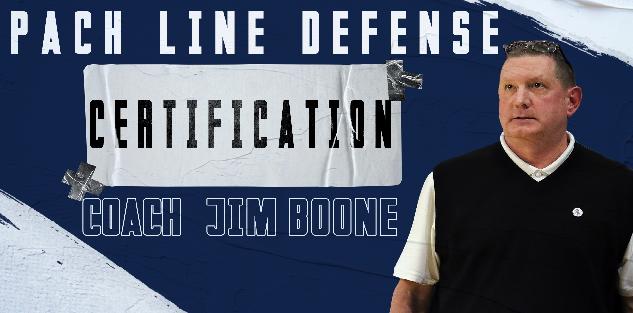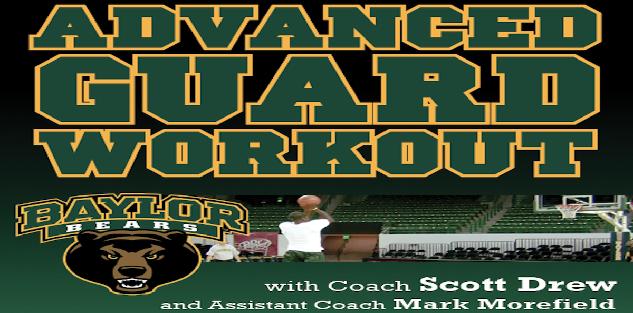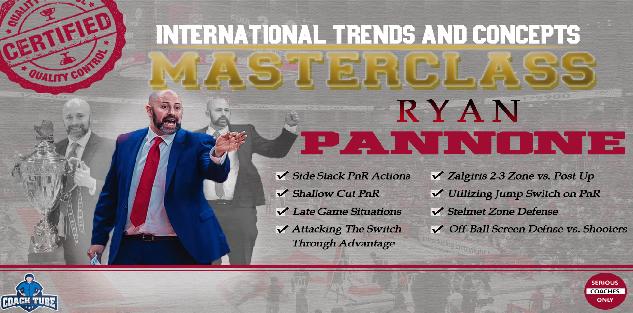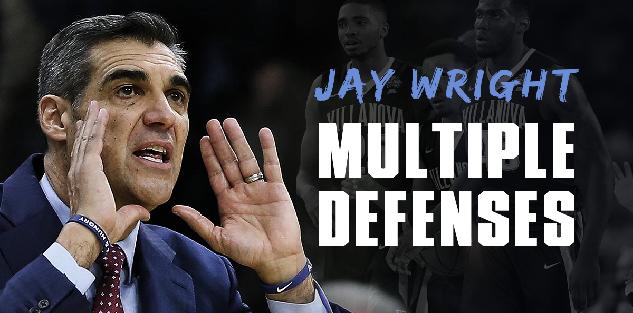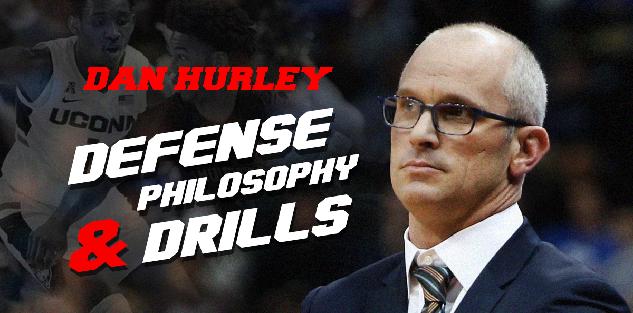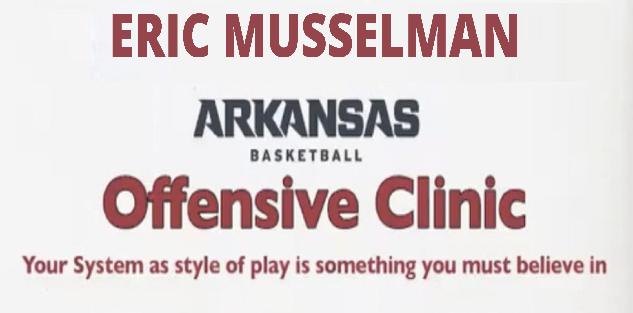Featured courses
- Two Great Game Situational Workouts For the Basketball Offseason by Grant Young
- Two Reads Basketball Players Must Understand Before Executing the Ball-Screen by Grant Young
- Two of LSU Coach Kim Mulkey’s Game-Winning Inbounds Plays by Grant Young
- Three Effective Early-Season Defensive Basketball Drills by Grant Young
- Four Essential Tips For Basketball’s 1-3-1 Zone Defense by Grant Young
- Four Zone Defense Drills to Strengthen Your Team by Grant Young
- How to Beat the Three Most Common Pick and Roll Coverages by Grant Young
- Two Drills to Improve Shooting at the Start of the Basketball Season by Grant Young
- Core Basketball Principles That Dallas Mavericks Coach Sean Sweeney Teaches by Grant Young
- Three Competitive Shooting Drills For Your Basketball Team by Grant Young
- How To Teach The ‘I’ Generation of Basketball Players by Grant Young
- Three Elite Drills to Begin a Basketball Practice With by Grant Young
- How to Build a Championship-Winning Basketball Team Culture by Grant Young
- Two of Texas Women’s Basketball Coach Vic Schaefer’s Tips For Team Culture by Grant Young
- Atlanta Dream WNBA Coach Brandi Poole’s Four Sets for Secondary Offense by Grant Young
- NC State Basketball Coach Brett Nelson’s 4 Crucial Point Guard Qualities by Grant Young
- Kentucky Coach Mark Pope’s Five Guard Rules For Offense by Grant Young
- McNeese State Basketball Coach Will Wade’s 4 Core Pillars by Grant Young
- 4 Tips To Instantly Improve Your Free Throw Shooting by Tyler Linderman
- Assemble a Championship-Caliber Basketball Rotation by Brandon Ogle
- Two of UConn Coach Dan Hurley’s Key Defensive Drills by Grant Young
- Four Post Moves All Basketball Forwards Should Have In Their Bag by Grant Young
- Four of Baylor Coach Nicki Collen’s Midseason Pick and Roll Adjustments by Grant Young
- WNBA Legend Sue Bird’s Two Tips For Attacking on Offense by Grant Young
- Houston Coach Kelvin Sampson’s Three Keys for Building a Basketball Program by Grant Young
- Two of Tom Izzo’s Top Michigan State Defensive Drills by Grant Young
- Four of Olympic Gold Medalist Coach Mechelle Freeman’s Relay Race Strategies by Grant Young
- Three Key Strategies Will Wade Uses to Build a Dominant Team by William Markey
- Five UConn Huskies Men’s Basketball Plays That You Can Use by Grant Young
- Three Tips for Maintaining Team Culture at the End of a Basketball Season by Grant Young
- Three Dribble Drive Motion Drills to Teach Your Basketball Team by Grant Young
- Three Dribbling Drills For Non-Primary Ball Handlers by Grant Young
- Four Advanced Ball Handling Drills For Basketball Guards by Grant Young
- Three Tips to Sharpen Your Post Player’s Footwork in Basketball by Grant Young
- These Three Pick and Roll Drills Are Crucial For Any Ball Screen Offense by Grant Young
- Three Closeout Drills to Improve Basketball Shooting Defense by Grant Young
- Three Tips to Perfect the Packline Defense in Basketball by Grant Young
- Four Keys to Executing the Read and React Offense in Basketball by Grant Young
- Three Tips to Develop Elite Basketball Shooters by Grant Young
- Three Crucial Keys to Executing the 5 Out Offense in Basketball by Grant Young
- These Three Offensive Sets Will Help You Beat Any Zone Defense by Grant Young
- Three Transition Basketball Drills To Play With More Pace by Grant Young
- Three 5 Out Offense Drills Any Basketball Coach Can Use by Grant Young
- Four Vital Techniques for a Motion Offense in Basketball by Grant Young
- Three Baseline Inbounds Plays To Win Your Basketball Team Games by Grant Young
- Four Drills For Sharpening the European Ball Screen Offense by Grant Young
- Three Positioning Tricks For a Basketball Zone Offense by Grant Young
- Three Rules to Perfecting Basketball's Lock Left Defensive System by Grant Young
- UCLA WBB Coach Cori Close’s Two Keys to Winning the Mental Game by Grant Young
- Four of Alabama Coach Nate Oats’ Favorite Basketball Drills by Grant Young
- Three Ways To Turn Transition Offense in Basketball Into Points by Grant Young
- Three Drills to Master Basketball's Pack Line Defense by Grant Young
- Three Transition Defense Drills to Halt Fast Breaks by Grant Young
- Four Offensive Rebounding Drills to Win Second Possessions by Grant Young
- 4 Defensive Technique Drills from Boston Celtics Assistant Coach Brandon Bailey by Marek Hulva
- 5 Drills to Improve Ball Handling by Tyler Linderman
- 13 FUNNY BASKETBALL GIFS by Alex
- BASKETBALL SPEED AND AGILITY: 8 QUESTIONS FOR COACHTUBE EXPERT RICH STONER by Jaycob Ammerman
- Defensive Strategies for Basketball by Ryan Brennan
- 4 Keys To Turning Your Program Into Championship Contender By Dallas Mavericks Coach Sean Sweeney by Marek Hulva
- 5 Components to Creating a Winning Basketball Program by Justin Tran
- Guide to Becoming a Lethal Scorer in Basketball by Justin Tran
- Zone Defense In the NBA Eastern Conference Finals by James Locke
- Mastering Court Mobility: Tips for Effective Movement in Basketball by Justin Tran
- 5 Basketball Shooting Drills: How to Develop a Sharpshooter by James Locke
- 6 Points of Emphasis for a Successful 5 Out Offense by Jaycob Ammerman
- Effective and Efficient Methods to Practice During the Basketball Season by Justin Tran
- Three Great Passing Drills From a Basketball Coaching Legend by Grant Young
- 7 Principles For Perfecting the Princeton Offense in Basketball by Grant Young
- How to Replicate A Modern NBA Offense by Grant Young
- Three Great Two-Ball Dribbling Drills For Basketball Development by Grant Young
- Two Rebounding Drills to Win Your Basketball Team Championships by Grant Young
- How to Improve Your Basketball Team’s Defense With the Shell Drill by Grant Young
- How Baylor Basketball’s Scott Drew Develops Elite Guard Play by Grant Young
- Off-Ball Movement Tips and Strategies: Lessons From the NBA Finals by James Locke
- Player Development: Scott Drew’s Tips for Producing NBA Guards by James Locke
- How to Execute a Spread Offense in Basketball by Grant Young
- Four Quality Quotes From Four Final Four Coaches by Grant Young
- A Guide to the Pack Line Defense by Alex Martinez
- 3 Defensive Build Up Drills to Improve Team Basketball Defense by Grant Young
- Battle of Two Great Coaches: Best Plays from the NBA Finals Contenders by Justin Tran
- 10 Creative Ways Athletic Programs Can Use a Video Board to Raise Money by Coach Williams
- How to Use 3 on 3 to Improve Your Basketball Team by Grant Young
- How to Defend the Pick and Roll by Grant Young
- Mastering Basketball Defense: Techniques, Drills, and Strategies for Success by Justin Tran
- Three Tips From The Coach Who Developed Giannis Antetokoumnpo by Grant Young
- 2023 NBA Draft: Skills and Technique from Top Prospects by Justin Tran
- From College to the Pros: Transitioning the Dribble Drive Offense by Justin Tran
- Positionless Basketball: Redefining Roles on the Court by Justin Tran
- Revolutionize Your Offense: Proven Concepts to Elevate Your Basketball Game by Justin Tran
- 5 Essential Fastbreak Drills Every Basketball Coach Should Know by James Locke
- How to Run a Circle Offense in Basketball by Grant Young
- Game-Changing Strategies: ATO Plays in the EuroLeague and Olympics by Justin Tran
- How to Stand Out at Basketball Tryouts by Grant Young
- How to Improve Your Basketball Team’s Transition Defense by Grant Young
- Indiana Fever GM Lin Dunn’s Two Keys For Women’s Basketball Coaches by Grant Young
- Strength Training Strategies Every Basketball Player Should Have by Grant Young
- A WNBA Basketball Coach’s Four Priorities In Transition Defense by Grant Young
- Three Adjustments to Make When Your Basketball Offense Isn’t Working by Grant Young
- Three Pillars to Applying Defensive Pressure on the Basketball Court by Grant Young
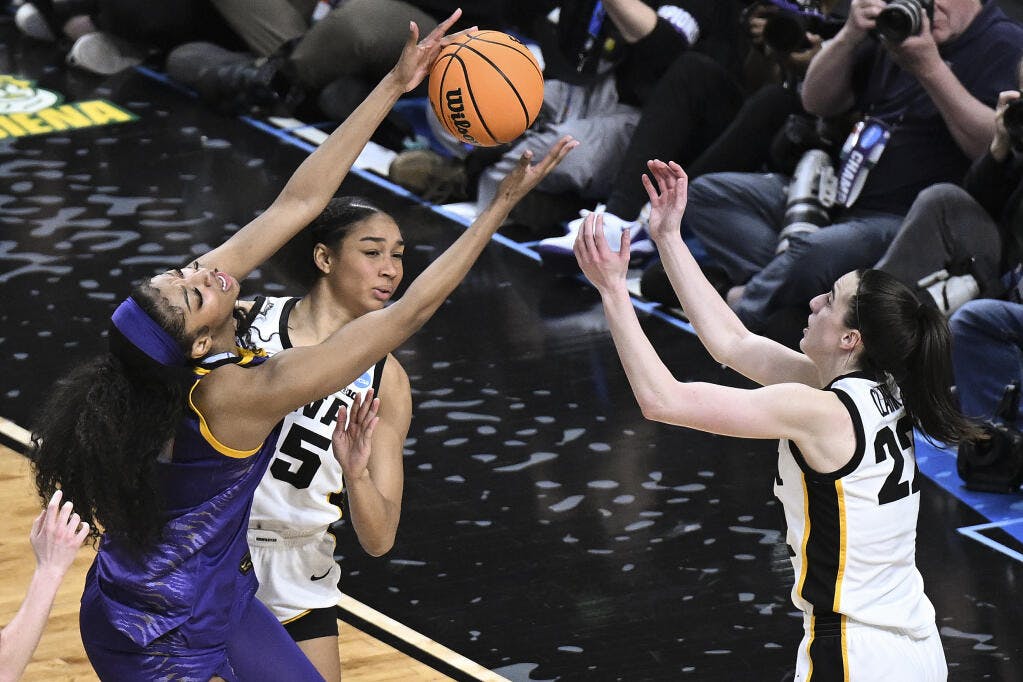
Three Adjustments to Make When Your Basketball Offense Isn’t Working
- By Grant Young
Everyone likes a basketball team that scores effortlessly because it's fun to watch. However, in order to become an offensive juggernaut on the basketball court, there are hurdles you must overcome. There are typical problems every team faces when revolving the offense.
Coaches must focus on their zone basketball offense troubleshooting when things get stale. Since the game has become a shooter’s league, a majority of teams face the same problems. A lack of movement stings the offense as players become stagnant in their catch-and-shoot role. Players now love to shoot the ball, emulating Golden State Warriors legend Steph Curry. Therefore resulting in a lack of penetration. It has now become one of the most undervalued and underutilized strategies, driving to the basket for a dunk or layup was the foundation of basketball.
Another problem is a lack of offensive rebounding, which allows the offense to get into a rhythm and create second opportunities to score. As well as a lack of passing which forces drives, forced shots, and forced passes, resulting in turnovers and bad possessions.
Yet, when there is a problem, there is always a solution. And Bob Starkey has solutions ready to share with you.
Coach Bob Starkey returned to Baton Rouge in April 2022 to serve as the associate head coach on Coach Kim Mulkey’s staff. Starkey’s impact was immediately felt, helping lead the Tigers to their first national championship in 2023. Throughout the championship season, Coach Starkey worked primarily with the post players (such as Chicago Sky rookie superstar Angel Reese) and developed intricate scouting reports that set LSU up for success against any opponent they faced.
Starkey came to LSU after one year of coaching at Auburn. From 1989-2011, Starkey coached at LSU with tenures with both the men’s and women’s programs, coaching basketball legends like Shaquille O’Neal and Sylvia Fowles.
In his ‘5 Things To Do When Your Offense Isn`t Working’ course, Coach Starkey discusses tips and tricks to help improve your offense when things become stagnant. He breaks down how to implement drills into practice and make sure your players get their touches.
Transition Attack
Perhaps the most crucial ‘Plan B’ to have when your zone offense isn’t working is a successful transition offense. Regardless of the level you’re coaching at, you will be at the receiving end of turnovers. And good teams can turn these turnovers into easy transition baskets on the other side of the court.
Coach Starkey suggests that every team should have a transition offense approach against zones, regardless of whether they’re a zone offense-oriented team. If your team has a quick guard who can pass the ball to wings who are streaking down the lane on defense then you will secure multiple easy transition baskets per game. And that can be all it takes to win some games.
Coach Starkey notes that he has seen many high school basketball teams only focusing on executing their zone offense during practice if that team is about to play an opponent that has a good zone defense. But he recommends taking the opposite strategy, instead focusing on transition offense. This is because transition basketball is going to work against any team, regardless of what defense they prefer to utilize in the half-court.
Offensive Rebounding

Another excellent thing a basketball offense should focus on when their typical system isn’t working is crashing the offensive boards.
Coach Starkey believes that offensive rebounding can be even more effective against zone defenses than a traditional man-to-man defense because the defensive players aren’t already guarding their players. As a result, a zone defense needs to go and find players to block out when the shot is up, which allows offensive players (especially the guards who are along the perimeter and therefore easily forgotten about) great opportunities to secure an offensive rebound.
However, Coach Starkey also makes it clear that it isn’t enough to rely on your team’s individual rebounding talent to be a great offensive rebounding team. A coach needs to allocate time during practice to work on crashing the offensive boards, and actively track which players are the best at doing so.
Combining the few easy baskets around the rim a team can score with solid offensive rebounding (which also takes possessions away from the defense) combined with them being able to score a couple of easy buckets in transition per game could spell all the difference in your team not having enough offense to win a game and getting to the number of points you deem necessary to win.
Plus, because offensive rebounding is a lot about effort, getting your team to commit to the offensive boards is also indicative of playing tough, hard-nosed basketball, which will help your team in other aspects of the game.
Shot Selection
“I’ve never seen a good offensive team that did not have defined shot selection,” Coach Starkey says.
It is a coach’s responsibility to have each player understand what shots are good are aren’t good for them and to have every team understand which shots are good or poor choices at various points in a game.
Bad shots can be detrimental to a team’s offensive rhythm. On the other hand, a team that has good, disciplined shot selection is going to be more efficient, which means it will take them fewer possessions to score than a team with a bad shot selection.
Of course, having a good shot selection doesn’t mean that players should be forbidden from taking three-pointers. But there’s a major difference between taking an open three-pointer at the end of the shot clock as opposed to taking a contested three at the beginning of a shot clock.

